Czech mate: behind the wheel of the GT-crushing Praga R1
You’ve probably never heard of the Praga R1 before, but competitors in the Britcar series are fully aware of its blistering capability on track. This year the R1 gets its own one-make cup, and as Andrew Frankel discovers at Donington, it’s a dream
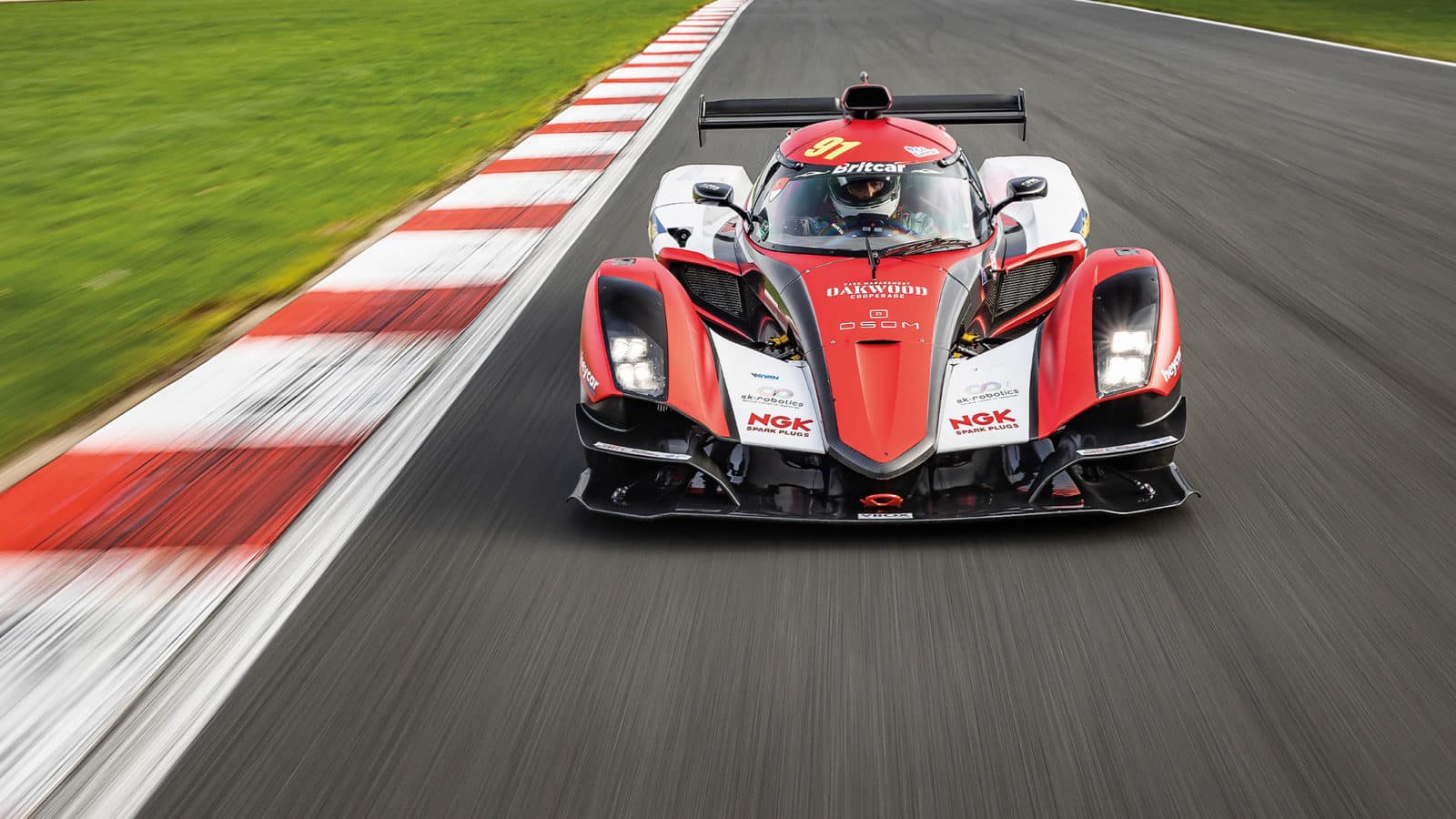
Lee Brimble
Even after all these years, a purebred racing car still feels completely different. I have always been impressed by the wonders manufacturers can achieve when converting softly sprung road cars into hard-as-nails GT3 and GT4 racers, but not even they can change physical law. You have the same body in white and same approximate dimensions as the street machine from which it is derived. Which means the result is always going to be compromised: higher, aerodynamically limited and much heavier than something designed for one purpose alone – to race.
The Praga R1 was only designed to compete so despite being far less powerful than a GT3 or GT4 car, when you put them on the grid together… Well, at last year’s Oulton Park round of the Britcar Endurance Championship there were nine R1s entered which duly qualified in the first nine places. When the season was over, R1s had won seven of the nine rounds.
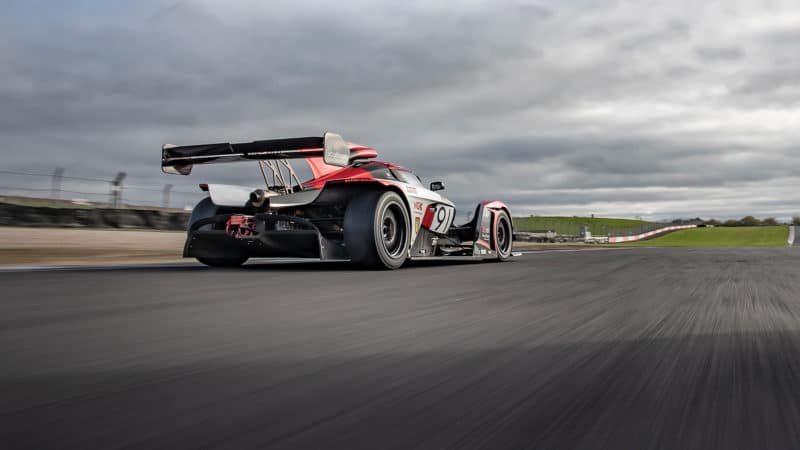
“The cabin environment is raw, even by race car standards”
Lee Brimble
Which probably goes a long way to explaining why, first, there was a Praga-only class in the championship last year and, second, why even that’s disappearing in 2022 as Praga launches instead its first one-make race series. This will see at least 16 R1s on the same bill at Britcar but, as GT3 and GT4 drivers will be delighted to discover, no longer in the same race. It makes sense all round as Praga joins that proud list of manufacturers whose cars are so fast relative to the opposition that if the situation were allowed to continue there’d be a sizeable risk the opposition would stop turning up.
Besides, they are very different cars, raced I suspect, for very different reasons. Drive a GT3 or GT4 car, especially if is built by the likes of McLaren, Aston Martin, Porsche or AMG, and you’re buying into an image as much as a machine. You feel good just to be racing a car from that brand and your sponsors feel good to be on its flanks too. There’s only one reason to race a Praga, and that’s because it’s so damn fast.
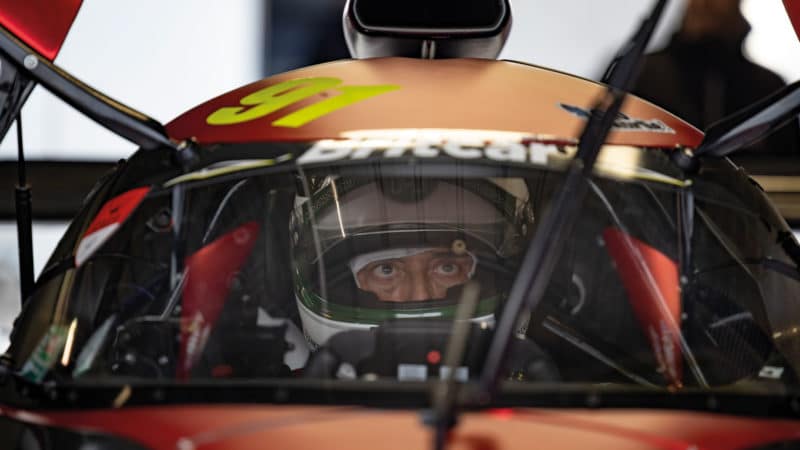
A central driving position gives outstanding track visibility.
Lee Brimble
If you’re still squinting and wondering what on earth a Praga might be, it’s a bespoke Czech racing car that’s actually been around for 10 seasons but which has been steadily evolved year after year. But for 2021 a major update has resulted in a new carbon tub, engine software, revised aero that increases downforce while reducing drag, a new floor, diffuser, splitter, rear wing, suspension and entirely new bodywork. A new car, essentially. Praga has its headquarters in Prague though the cars themselves are built in Slovakia.
We meet at a cold and damp Donington where chiselled whippet racers half my age are lining up to test it before deciding whether to commit to racing one in 2022. An R1 costs around £165,000 – about half the price of a GT3 car – and is designed to be so owner-friendly it can be looked after by a single mechanic, though if you wish to race it and do well you’re probably going to need rather greater resources. Even so, a season should cost a small fraction of what people pay to go and play with the GT3 crowd.
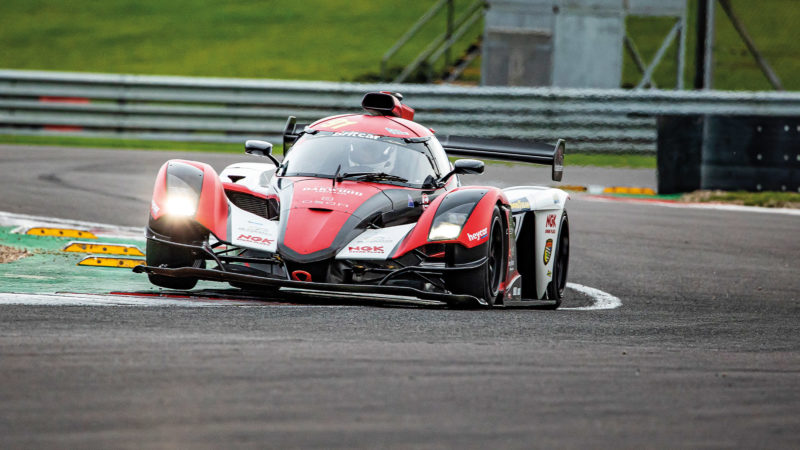
Lee Brimble
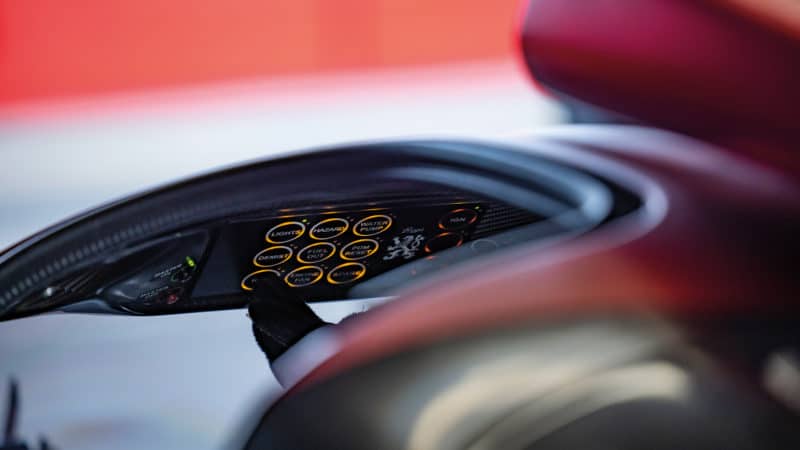
Lee Brimble
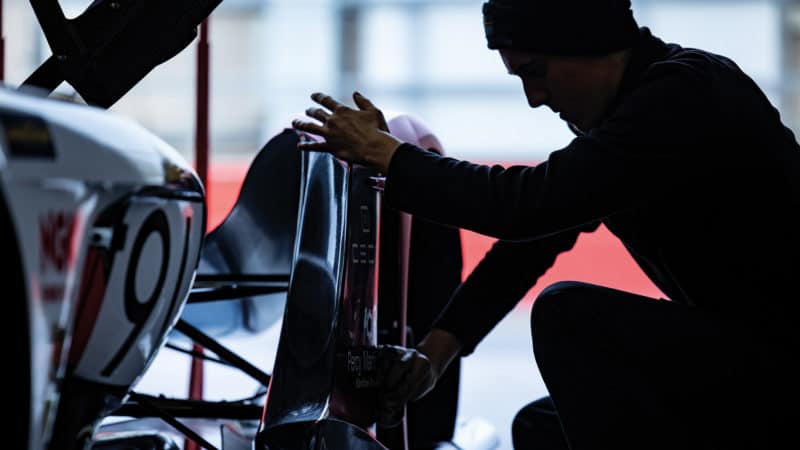
Lee Brimble
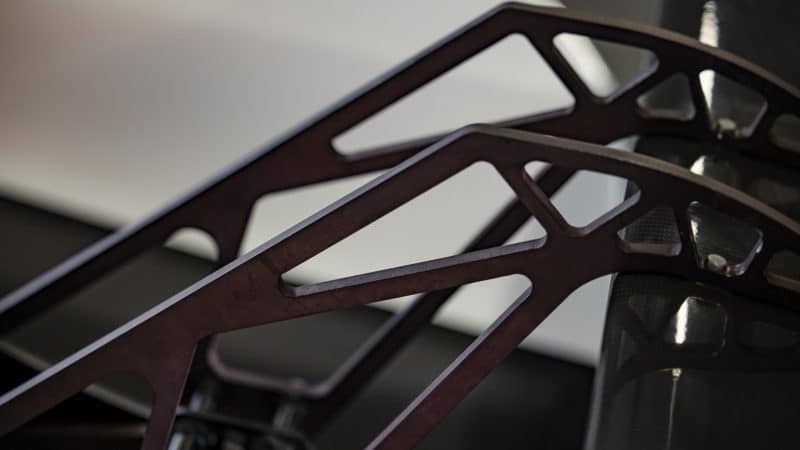
Lee Brimble
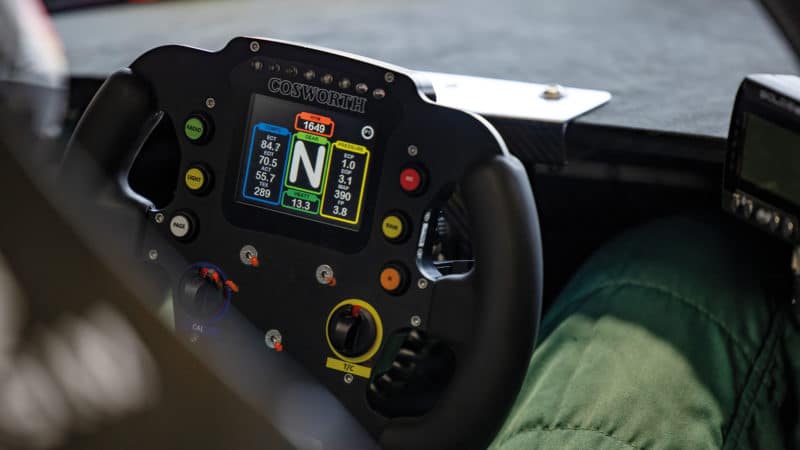
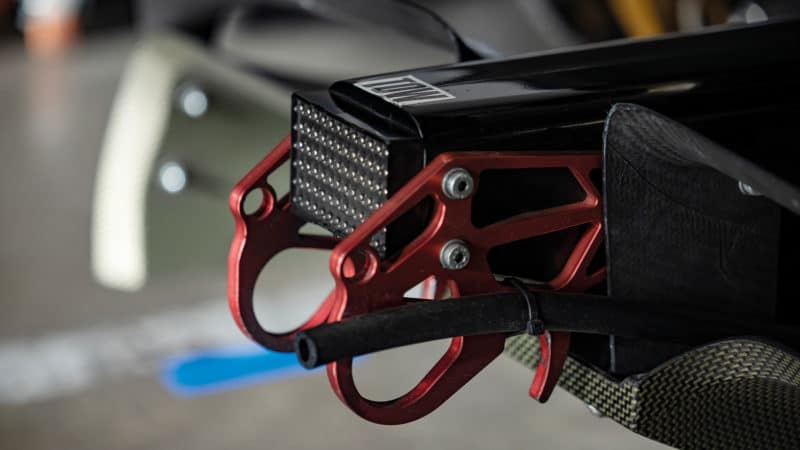
Lee Brimble
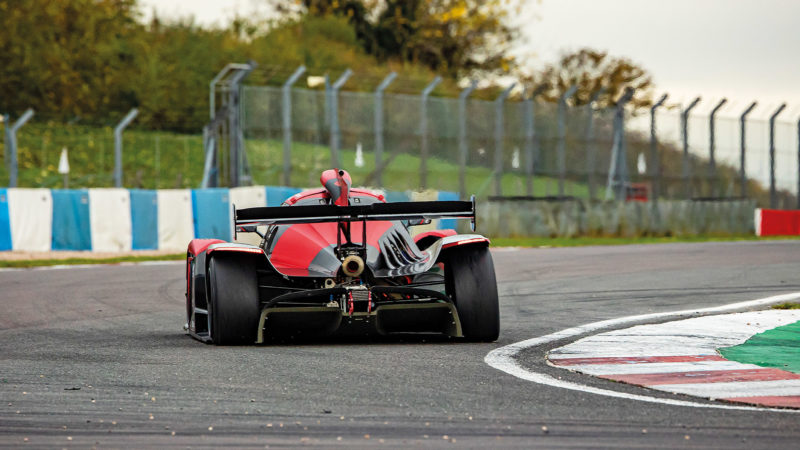
Lee Brimble
The car itself is a single-seat, centre-steer, all-carbon racer. Power comes from a 2-litre four-cylinder Renault turbo engine giving up to 380bhp depending on which map you choose. Not much, is it? Except the R1 weighs just 643kg, which means it provides close to 600bhp for every tonne of weight. For a common-or-garden 1500kg road car to match this, it would need around 900bhp. So it’s not going to be slow in a straight line. But long before you’ve even sat in it, you know its acceleration is likely to be its least impressive aspect, and by a distance.
I’m looking doubtfully at the tiny aperture through which I must somehow pour myself even to gain access to the cabin, but once I’m told how to do it – sit on the sidepod, swing legs in, feed them down central channel towards the pedals and the rest of you just naturally follows – it’s easy enough.
The cabin environment is raw, even by race car standards. There has been no attempt to prettify the interior, nor even really tidy it up. Everything is where it needs to be and that’s about it. The wheel is small and has no power assistance. It contains a simple Cosworth readout with the usual displays and a few buttons for controlling aspects like the engine map, pitlane speed, selecting neutral, the radio and so on.
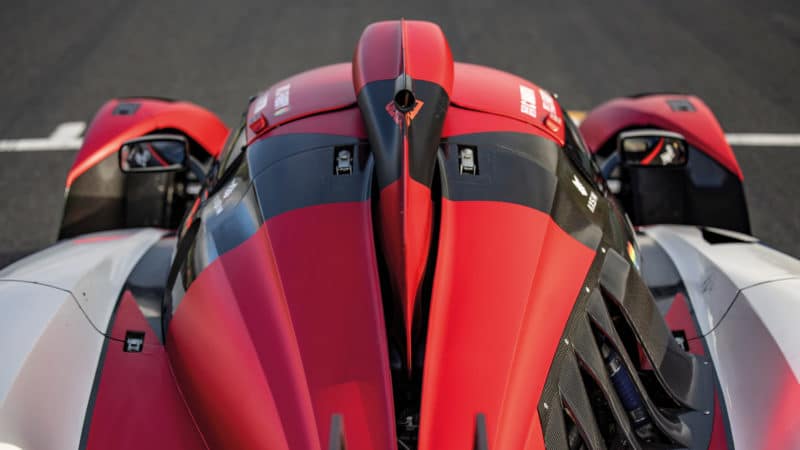
The latest R1, from last year, is in reality a new car, giving 15% more downforce than the previous model
Lee Brimble
What is different is how you sit and what you see, for this is the bum-down, knees-up driving position of a single-seat racing car which, of course, is what it is. And that central driving position provides symmetrical and unexpectedly excellent visibility, aided by wing mirrors I’d expected to be hopeless but which actually work quite well. Having all the ancillary buttons you don’t need while driving in a roof-mounted touchpad makes sense too: you don’t see it unless you’re looking for it, which leads to less distraction.
And I need not to be distracted because today, at least at first, Donington is at its slippery worst: wet in places, damp in others with odd patches of dry. It would be much easier if it were actually raining.
The R1 has a foot clutch but it’s displaced off to the left and is used only for pulling out of the pit garage. You can technically use your right foot to brake but the sliding pedal box is set up more naturally for your left hoof and, besides, relieved of its usual workload, it gives it something to do.
The engine turns a few times then fires. It’s loud and coarse, a tool for a job and nothing else. Press the neutral paddle, call for a gear and hear one thunk reassuringly into place. I’m in the gentlest engine mode, about 310bhp and a soft response to each prod of the pedal. It feels enough as I grope around Donington wondering where the grip level might be. It’s not obvious: despite the absence of rubber in its pushrod suspension and that unassisted helm there’s not a great deal of ‘feel’ through the chassis. I’m slightly marooned. All I can tell is that the car feels incredibly direct, closer to a kart (Praga makes those too) than a GT car. I’m expecting it to twitch mightily in these conditions.
So the only option is to push on incrementally until something happens, trying to put some warmth and pressure into its Dunlop wets, and deal with it when it does. But when the moment arrives, it comes with little drama, the nose pushing slightly wide of an apex, and killed with a quick lift of the throttle. And now I know.
This one moment unlocks the car for me, and from there it just gets better. With additional effort comes additional heat, pressure, load in the suspension and that feel I’ve been looking for; confidence arrives like the cavalry coming over the hill and though we’ve agreed I’ll wait until the track has dried before trying the motor’s more adventurous settings, I go straight for the full fat map three, because there’s nothing here to suggest the car can’t handle it.
And it’s electrifying to drive, in a way no car of double the weight could ever hope to be, regardless of how posh the badge on its prow. They may have mighty multi-cylinder motors, but they can’t hardwire you into the machinery like this. Best if all is the balance, which inclines towards understeer on entry with controllable oversteer away from the apex if that’s what you want. We are at an RMA track day reserved for small numbers of drivers with very fast cars – street supercars and race versions of Porsches and Ferraris – and the Praga is so much faster than anything else out there you have to be careful about closing speeds, especially in quick corners.
What it’s not is as comfortable as a GT car. The steering gets quite heavy when the loads really build and while I far prefer that to the superlight and lifeless steering you find in less purpose-built, more power-assisted racers, a day later my shoulders still hurt. And that coarseness, which vibrates the car and its occupant equally and incessantly, never disappears. Tomas Kasparek, who owns Praga Cars, suggests it’s related to the internal rollover bar that Motorsport UK regulations force upon it (which he says performs no useful role as it’s nothing like as strong as the carbon structure inside which it sits), but I can report only what, not why.
I can feel the wets starting to struggle a little as the track dries, so I return to the pits, waiting as long as I can before going out again on pre-heated slicks.
Clearly the car would be several streets quicker as a result, but actually I preferred it on the wets. The balance had changed, making the car understeer more in slow corners, my rather old-school efforts to ameliorate the effect with a bootful of throttle leaving me facing the wrong way at the Melbourne hairpin. In the fast corners it was mesmerising – I couldn’t bring myself to turn into the Craner Curves flat in sixth though I know the car would do it – but that’s what you get when you create a car with one-and-a-half times its own weight in downforce. And the understeer? A bit of testing would dial that out.
Having not paid Praga much attention until now, I left Donington with a mind full of thoughts about the R1. The first thing to say is despite the fact it’s perhaps not a very well-known brand from a country not well known for its racing cars, the Praga R1 is a well-engineered racing car whose pace is absolutely in keeping with its outlandish appearance. They have focused on exactly the right areas, keeping the weight as low as possible and maximising the aero to maintain lap time rather than chasing horsepower, and creating a driving environment that most experienced racers will appreciate and enjoy.
To drive, it is a world away from a GT car and for largely the right reasons. Because what I liked most about the R1 was its simplicity and the way it involved the driver as a result. There’s no ABS here nor any traction control (despite a switch on the wheel suggesting as much). So you can’t just hit the one pedal as hard as you can on the way into a corner and then do the same to the other on the way out as GT cars allow. Do that in the Praga and you’d be in the gravel at the first corner. You have to think about it all the time and the trickier the conditions the more you have to think, and the more you have to think, the more involved you become. This is not a car that makes you feel like an operator or manager, it makes you feel like a driver. And that, surely, is what it is all about.
Praga R1 specificationPrice: Approx £165,000 |
Praga Cup 2022 March 12/13 April 2 May 14/15 June 4/5 August 20/21 October 22/23 |

